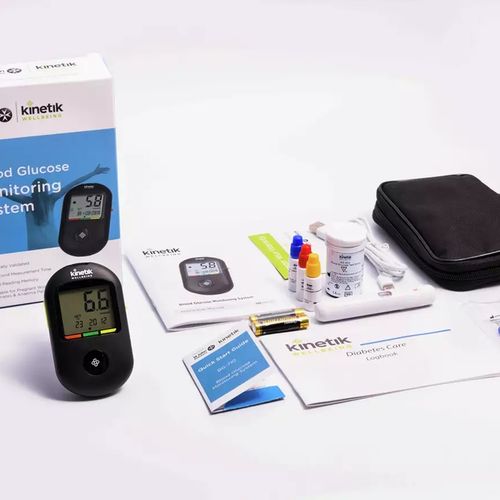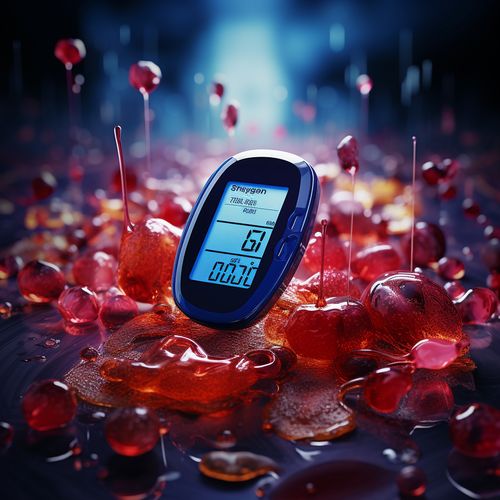Keeping your blood sugar levels within a healthy range is important for everyone, but especially so for people with diabetes. Monitoring your blood glucose levels regularly can help avoid dangerous highs and lows in the short term, while also reducing your risk of developing complications in the future.
Think of your blood sugar like a roller coaster – too many ups and downs can leave you feeling awful. Whether you’re racing through busy workdays or relaxing at weekends, maintaining steady blood sugar levels isn’t just about avoiding diabetes. It’s the key to unlocking consistent energy, better moods, and fewer of those mid-afternoon crashes that send you hunting for biscuits.
Who Should Check Their Blood Sugar?
While tracking your blood sugar can be interesting even if you don’t have diabetes, it isn’t overly useful unless your doctor has asked you to do so.
For people who haven’t been diagnosed with diabetes, a single blood sugar reading only provides a snapshot of one moment in time. It doesn’t give an accurate picture of what your average blood glucose levels look like over a longer period.
Regular home blood sugar monitoring is most useful for people who already have diabetes, especially those using insulin or other medications that can cause low blood sugar. Testing allows these patients to closely track their glucose levels throughout the day and take action when needed.
Why Should People With Diabetes Monitor Blood Sugar Levels?
There are a few key reasons why careful blood sugar monitoring is so important for people with diabetes:
- Avoiding short-term emergencies – Blood sugars that are too high or too low can quickly become life-threatening emergencies. Frequent testing allows swift identification and treatment of things like hypoglycaemia, diabetic ketoacidosis, and hyperosmolar hyperglycaemic state.
- Reducing long-term complications – Over time, consistently elevated blood sugars increase your risk for serious complications like heart disease, kidney disease, strokes, and eye problems. Keeping glucose levels within target ranges can help minimise these risks.
- Avoiding risks from tight control – For some patients, aiming for very tight blood sugar control can actually increase the risk for cardiovascular disease due to frequent episodes of hypoglycaemia. Checking glucose levels helps avoid this danger.
Signs Of High Blood Sugar
When your blood sugar gets too high, you might:
- Feel very thirsty
- Need to wee more often
- Feel tired all the time
- Have blurry sight
Signs Of Low Blood Sugar
When your blood sugar drops too low, you could:
- Feel shaky
- Start to sweat
- Get cross or mixed up
- Feel very hungry
What Are Normal Blood Sugar Levels?
Ideal blood sugar levels vary based on whether you have diabetes, what kind, and also factors like pregnancy.
For people without diabetes, normal glucose levels are:
- Fasting (before eating): 4.0 to 5.9 mmol/L
- 2 hours after eating: Less than 7.8 mmol/L
For people with diabetes, target ranges are:
Type 1 Diabetes
- Upon waking: 5-7 mmol/L
- Before meals: 4-7 mmol/L
- 2 hours after meals: 5-9 mmol/L
Type 2 Diabetes
- Before meals: 4-7 mmol/L
- 2 hours after meals: Less than 8.5 mmol/L
Pregnant Women with Diabetes
- Upon waking: Less than 5.3 mmol/L
- Before meals: Less than 5.3 mmol/L
- 1 hour after meals: Less than 7.8 mmol/L
- 2 hours after meals: Less than 6.4 mmol/L
These are general targets only. Your doctor may advise different numbers based on your individual health profile.
Quick And Easy Meal Ideas For Steady Blood Sugar
Let’s talk about real food for real life! Planning your meals doesn’t need to be a headache. Here’s a day’s worth of tasty food that’ll help keep your blood sugar steady.
For breakfast, try porridge topped with berries and a sprinkle of seeds. The oats release energy slowly and the berries add natural sweetness. Pop a handful of nuts on top for extra staying power.
Lunchtime? Make your sandwich work harder by using granary bread. Add tuna, egg or chicken with lots of crispy salad. The protein helps steady your blood sugar while the fibres in your granary bread slow down sugar release.
For tea, try the “traffic light” rule. Fill half your plate with green veg (think broccoli or peas), add some lean protein (that’s your amber), and a small portion of potato or rice (that’s your red). Easy peasy!
Feeling peckish between meals? Grab an apple with a small chunk of cheese or munch on some cherry tomatoes with hummus. These snack combos help keep your blood sugar on an even keel.
When To Call Your Doctor
Not sure when to get help? Think of your body like a car. Just as you’d call a mechanic when the warning lights flash, certain signs mean it’s time to ring your doctor.
Call them if:
- Your blood sugar stays high even when you follow your usual routine
- You feel dizzy and shaky more than usual
- Your wee smells sweet like fruit
- You keep getting thirsty no matter how much you drink
- You feel too tired to do normal tasks
These signs don’t always mean trouble but it’s better to check. Your doctor would rather hear from you early than late. Think of them as your health teammate – they’re there to help, not judge.
What To Look For In A Blood Glucose Meter
When selecting a blood glucose meter, there are several key features to consider. Our recommend machines are the Kinetik Wellbeing Blood Glucose Monitoring System BG-710 and the GlucoNavii Blood Sugar Meter Glucose Monitor Starter Kit – mmol/L. Both are excellent devices that meet many of the desired pre-requisites for a good blood glucose meter. Such as:
- Accuracy – The accuracy of the meter is critical. Look for one that is within 10-15% of laboratory values.
- Test strip cost – Test strips can be expensive, so choose a meter where strips are affordable. Some brands offer discount programmes.
- Coding – Coding strips add an extra step but improve accuracy. Consider if this matters to you.
- Alternative site testing – Some meters allow testing blood from places besides the fingertip. This adds convenience.
- Data management – Many meters now sync data to apps and software. Choose one with connectivity options you need.
- Insurance coverage – If you have insurance, verify the meter and strips are covered before purchasing.
- Lancing device – Most meters come with a device to prick your skin for blood. Ensure it is comfortable and effective for you.
- Portability – If you’ll be testing on-the-go, pick a small meter that’s easy to transport.

Do some research and ask your doctor for advice to select the best glucose meter for your personal needs and preferences. Having the right tool makes monitoring your blood sugar simpler and more effective.
The key is to work with your healthcare team to determine safe blood sugar ranges for you and use your glucose meter to stay within those levels. This helps optimise both short-term safety and long-term health. Don’t hesitate to contact emergency services if you experience symptoms of a diabetic emergency like confusion, vomiting, rapid breathing, or loss of consciousness.
By checking your blood sugar levels routinely and taking action when needed, you can remain in control of your diabetes and reduce associated risks. Monitoring gives you the power to catch concerning patterns early and prevent progression to emergencies or complications. For people with diabetes, self-testing of blood glucose provides invaluable insight into your health.
Photo by Anthony Cunningham for Zoom Health UK
Zoom Health is a leading UK supplier of Home Health Tests and Earplugs
This post was originally published in 2024. It was last updated in January 2025.





